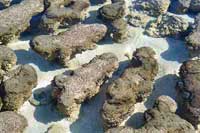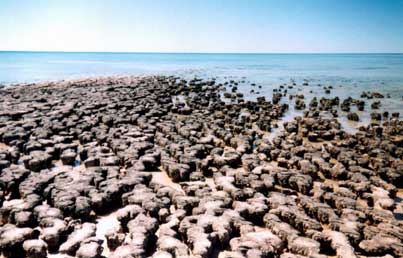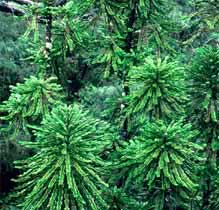 Accommodation | International
Flights | Domestic
Flights | Tours
| Travel
Insurance | Car
Hire | Visas
| Shopping
| Dating
| Humour
Accommodation | International
Flights | Domestic
Flights | Tours
| Travel
Insurance | Car
Hire | Visas
| Shopping
| Dating
| HumourAmazing Australian Discoveries
Australians have discovered heaps of interesting and amazing things over the years. Below is a selection of them;
Belly button lint
Dr. Karl Kruszelnicki, a researcher at the Sydney University who is well known for his radioshows on Triple J and several books on all aspects of science explained in plain language decided to do some research on belly button lint. During his radioshow he called on listeners to send in their belly button lint and after painstakingly examining the contributions of 5000 people he discovered that overweight middle aged men produce the most belly button lint!
Extinct wallaby discovered
The Tammar Wallaby had been extinct in Australia since the start of the 1900s but would you believe it, they were found on a small island near Auckland in New Zealand! In the 1870s a wildlife enthusiast by the name of Sir George brought a bunch of these wallabies to Kawau Island where they have thrived having no natural enemies. They have thrived that much that the New Zealand government regards them as a pest and wants to get rid of them. The Australian government put up $100,000.- to transport them and after some time in quarantine in Adelaide they will be re-introduced into the wild after an absence of over a century.
Idiospermum
When farmer John Nicholas in the Daintree kept finding
one dead cow after another he called in the vet whose opinion was
that it looked like strychnine poisoning. First the farmer suspected
neighbours of killing his cows but when the vet examined the cows
he found tree seeds inside their stomachs that he sent away for
analysis. It took some time for the results to come back as the
seeds could not be identified but finally, after going as far as
Germany where some old research results from an Australian fieldtrip
were filed away the conclusion was the seeds were from an Idiospermum,
one of the first flowering trees to evolve on this earth but thought
to have been extinct for millions of years! Scientists rushed to
theDaintree farm but were in for a shock. The farmer meanwhile had
also concluded that the seeds had killed the cows so what do you
do then? Of course! You get your chainsaw and cut the tree down!
After their initial heart attack on arrival the scientists later
managed to find more Idiospermums.
The Daintree without a doubt still has countless secrets and new
species to be discovered, at the canopy crane at Coconut Beach where
scientists get lifted up in a gondola to study life in the canopy
many thousands of new insects have been discovered in only a couple
of years.
Lemonjuice cure for AIDS
University of Melbourne's Professor Roger Short made the discovery that lemon juice kills the AIDS virus after he put lemon juice in a test tube with HIV-positive sperm and the sperm were permanently immobilised within 30 seconds. In Australia the Federal Government had refused to fund human trials of this discovery but Roger found the Thai government interested and they will fund a trial on at least 400 Thai men and women. Roger claims the lemon juice also killed syphilis, gonorrhoea and chlamydia. Officials at the international AIDS conference in Bangkok announced the first human trial.
Million dollar lump
A South Australian family went for a stroll on the beach near Streaky Bay and found a big lump of a strange substance. They started asking around what it could be and would you believe it, it was a lump of ambergris, a wax-like substance originating from the intestine of a sperm whale. The stuff stinks like no tomorrow when spitted out by the whale but as it floats around the ocean for a few years the effects of salt water and sun change it and the smell improves dramatically. Throughout history it has been a prized substance used in perfumes, for medicinal purposes, as an aphrodisiac, to enhance the flavours of food and wine, and for all sorts of herbal and homeopathic remedies. With prices of up to $US65 a gram being paid for the extremely rare stuff it is worth more than gold and the 14.75kg lump could earn the South Australian family a million dollars!
Pintupi nine
In October 1984 Melbourne newspaper 'The Herald' ran
a spectacular headline "We find the lost tribe! " A group
of nine Aborigines was discovered in the forbidding Great Sandy
Desert who still walked around naked and had never seen a car or
shotgun before! They were in fact not lost at all but just living
a nomadic lifestyle and surviving just fine. But their "discovery"
was considered huge news in an age where people considered the world
explored and charted.
During the 1950's the British were firing rockets from Woomera direction
west and thought it was best to move the local Pintupi tribe Aborigines
out of the area so they relocated them up to the Northern Territory
and north west Western Australia. They did not fare well there and
alcohol did its damage. But during the 1970s when Aborigines were
given landrights they started making plans to return to their home
lands and in 1981 the Pintupi traveled to Kintore near the Western
Australia border to set up a community. Later they crossed the border
as their actual homeland lay further west and so it happened that
in 1984 when Pinta Pinta and his family were setting up a settlement
at Winparrku that they were spotted by Piyiti and Warlimpirrnga,
who were scared by their car, intrigued by their clothes, and angry
about them invading their land. They met but initially did not know
they all originated from the same tribe and there was a tense stand-off
where they were frightened of eachother and a gunshot was fired.
This caused the settlers to flee and, on a flat tyre, they drove
60 km. back to the others to tell them what they had seen, still
thinking they had seen ghosts or scorcerers. Fortunately Freddy
West Tjakamarra knew of a family that had never come in to let themselves
be transported by the British and they felt sorry for 'the naked
ones' as they called them and decided to look for them. It took
them some time as the two had gone on the run north, having been
vary scared by the shotgun, and they tried to hide their tracks.
The trackers even stripped naked as they thought the group might
be scared by clothed people. They started finding more tracks of
another seven people and eventually they found an exhausted older
woman hiding in the spinifex, with a man nearby ready to throw a
spear. Finally as tensions settled the group was given the choice
of coming in with them or staying there and they opted to come in.
Most of them reluctantly climbed in the vehicle but several jogged
behind the vehicles. The tiny settlement of Kiwirrkurra where they
arrived was not exactly the highlight of civilization but still
in comparison to their previous lifestyle there were many modern
conveniences to discover, like matches, blankets, sugar, oranges,
and within several days they all had colds and were coughing and
sneezing. The group was actually under threat from inbreeding at
that time as the genepool had run dangerously low being isolated
all that time, normally Aborigines have a complicated skin classification
system to avoid this. Some of them died in the next few years due
to medical problems and some moved on to become well known artists.
Spag bol
Dr Adele Wessell, a historian at Southern Cross University has done research on what Aussies most often cook at home and has discovered that spaghetti bolognaise, (called spag bol by Aussies that like to abbreviate everything in life), is Australia's national dish! She will present her discovery to the British World Conference in Melbourne from July 2 to 4, entitled 'There's no taste like home: the food of the empire'.
Stomach ulcers caused by bacteria
Aussie scientists Robin Warren and Barry Marshall discovered that stomach ulcers are causes by the bacteria Helicobacter pylori, and not stress and lifestyle like the rest of the world had always believed. This means that patients can now be treated with anti biotics, much to the dismay of pharmaceutical companies that make millions of dollars with existing anti-ulcer drugs. The two ingenious Aussies were rewarded with the 2005 Nobel Prize in Physiology or Medicine that included $1.7 million in cash. When the whole sceptical scientific community ridiculed them Barry managed to prove them wrong in a very interesting way; he drank a dose of the Helicobacter pylori bacteria that he had grown in his lab and hip, hip, hooray! shortly after he was diagnosed with stomach ulcers. His wife thought he was nuts when he told her in an ecstatic state the good news that he now had stomach ulcers!
Stout infantfish
The first one of this tiny species was discovered
at Lizard island in north Queensland in 1979.
A fully grown adult stout infantfish grows to a maximum of seven
mm. and weighs only one milligram! They also do not live longer
than two months and never get to develop fins, teeth or scales and
reach maturity in only one month but as they are paedomorphic they
retain larval characteristics all their life. The female lays her
eggs when she is only two to four weeks old and then dies not too
much later. The fish has been submitted to the Guiness Book of Records
to be listed as the world's smallest vertebrate.
Stromatolites

Stromatolites
Photo by Froggy
The rocks pictured above are found in the Hamelin
Pool Marine Nature Reserve on the way to Monkey Mia.
At first glance they do not look overly exciting and it is not too
long ago that scientists discovered what they actually are, they
include some of the most ancient records of life on Earth!
According to the scientists these stromaltolites are layered accretionary
structures formed in shallow water by the trapping, binding and
cementation of sedimentary grains by biofilms of microorganisms,
especially cyanobacteria (commonly known as blue-green algae).
And because these "rocks" have been doing this pretty
well ever since our planet has existed, about 3.5 billion years
or so, they are like an aeroplane's black box to the scientists.
About 1,250 million years ago they were most abundant and nowadays
they only survive in a few places on earth, mostly in highly saline
environments.

Viagra from the sea
Mackay-based stinger expert Dr Peter Fenner discovered
in 1998 that a rare type of irukandji jellyfish in the Whitsundays/Mackay
area can cause, aside from painful cramps and vomiting, a prolonged
erection in men that are stung by this sea creature. But they also
said that, before hordes of older men start booking reeftrips to
search for this creature, they should realize it is very rare and
researchers only see two specimens a year. Miss Gershwin who works
at James Cook University said that it was an important discovery
from a pharmaceutical point of view though research into this phenomena
would prove difficult as the species was too rare to be harvested.
So it looks like manufactured 'Natural Sea Viagra' is along way
off and it is not advisable to purposely get stung before your date
because the side effects of getting stung include severe pain, vomiting,
a potentially fatal rise in blood pressure and severe cerebral haemorrhaging.
Wollemi Pine

Photo by www.wolemipine.com
The Wollemi Pine (Wollemia nobilis) was discovered
purely by chance near the Blue Mountains by bushwalker David Noble,
a NSW National Parks and Wildlife Officer, in 1994. It is one of
the oldest and rarest trees in the world and related to the Kauri,
Norfolk Island, Hoop, Bunya and Monkey Puzzle pines.The Wollemi
Pine belongs to the 200 million year old Araucariaceae family and
was thought to be extinct, the oldest known fossil is 90 million
years old! Their location is kept secret as there are only a hundred
mature trees found. The Wollemi Pine is a conifer with attractive,
unusual dark green foliage, bubbly bark and sprouts multiple trunks.
It grows fast in light, favours acid soils, and temperatures from
-5-45°C . The largest wild Wollemi Pine in the rainforest gorge
is 40m tall with a main trunk of 1.2m wide. Conservationists have
given the tree its own website where you can get involved in the
conservation of this tree, more
info...
Do you know of, or have made, any amazing Australian discoveries? Then contact us!
HOME PAGE
Tourist Information
General Information
And Entertainment
ACCOMMODATION IN AUSTRALIA
Bed
& Breakfast
Budget
Accommodation
Backpackers Hostels
Hotels
in Australia
CAR HIRE IN AUSTRALIA
Australia Rental Cars
And
Campervans

TOURS
IN AUSTRALIA
What To Do In Australia
On-line
Shopping
On-line
Dating
![]()
About
Australia
Visas For Australia
How
To Get To Australia
How To Get Around
Travel Insurance
Travel Guides
Working
In Australia
Australian
Posters
Survival
Tips
Weather,
When To Go

Use of
this website constitutes acceptance of the User Agreement for this website
Contact us |
Advertise on this site
| Link to this site |Add
your photos or stories to this site |
Webmasters | Affiliates
